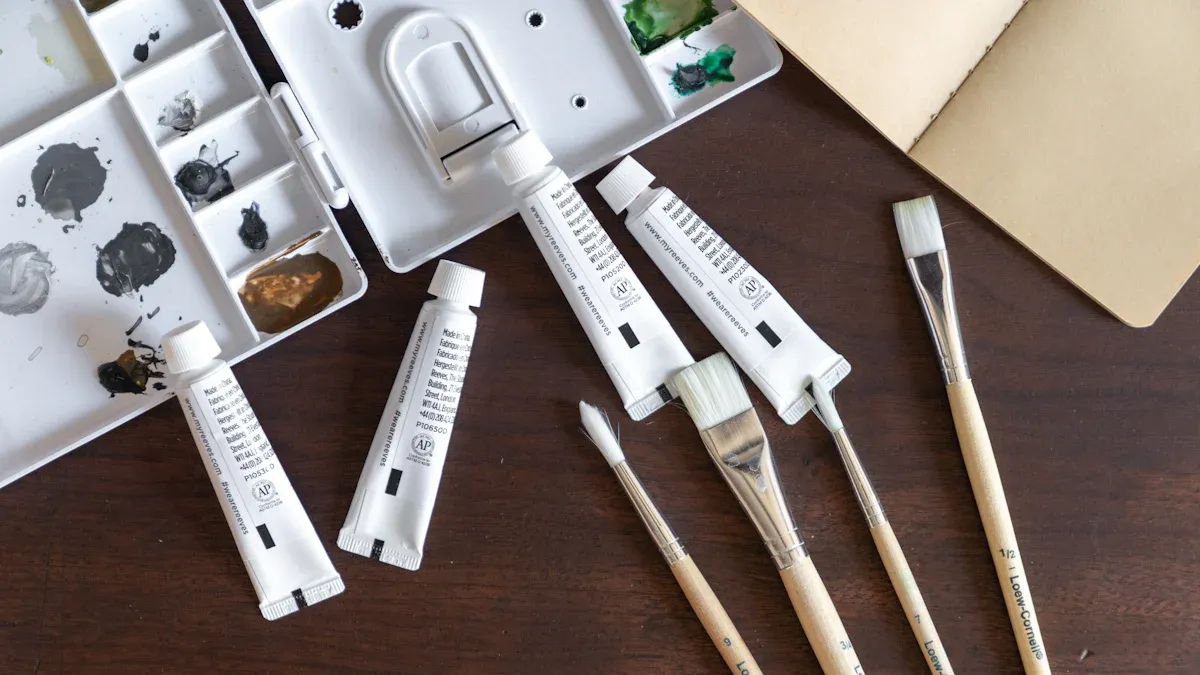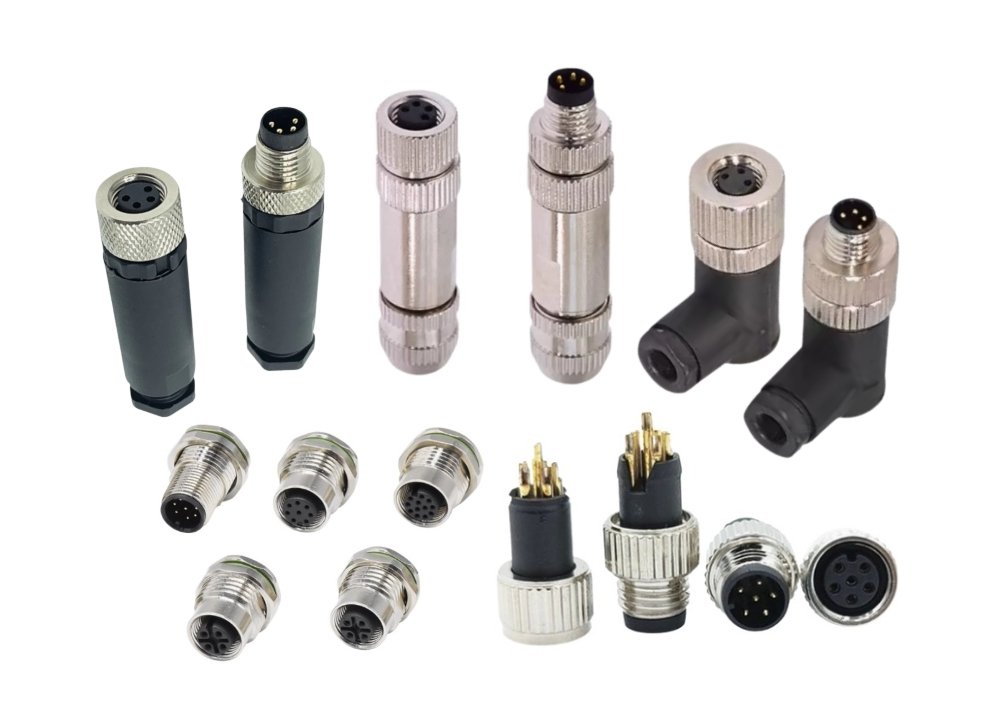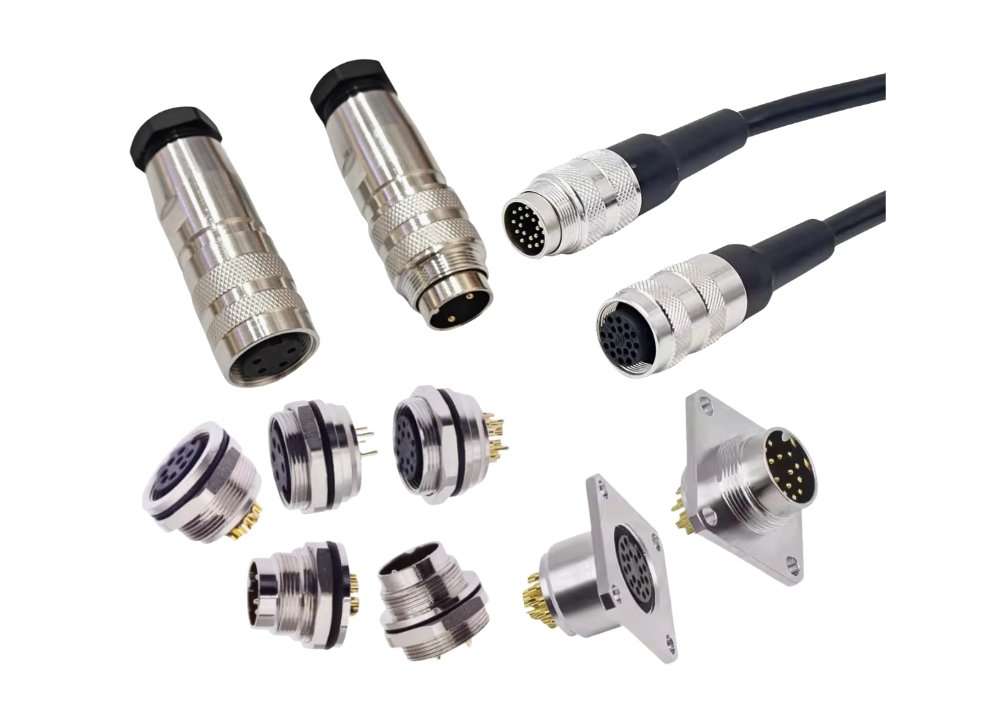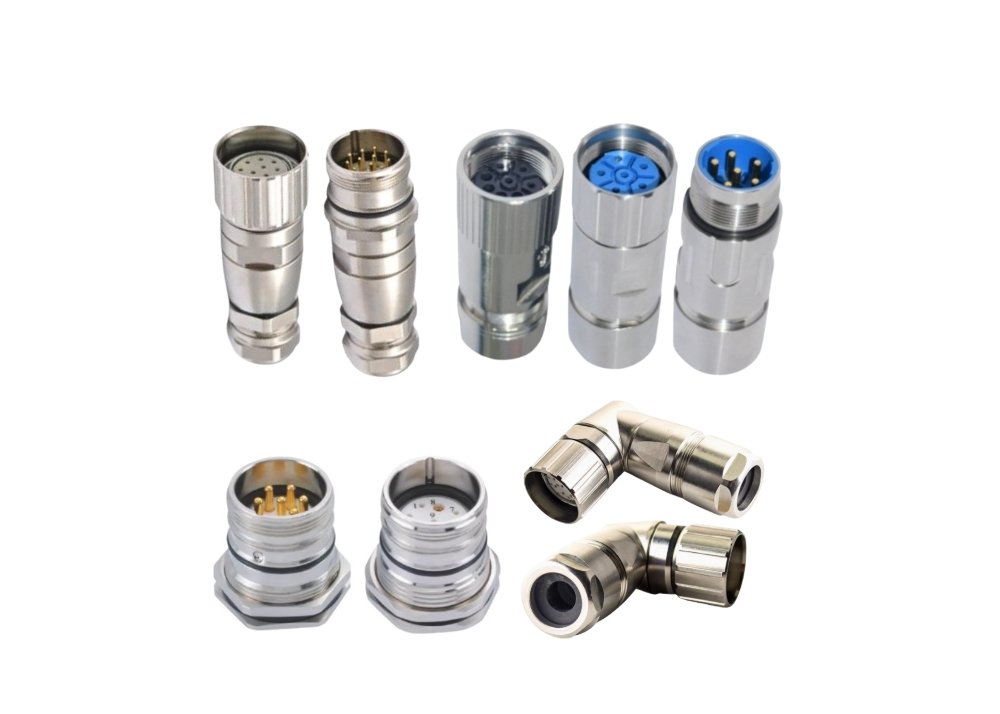
Industrial adhesives play a vital role in data transmission systems. Engineers rely on adhesives with proven performance data to ensure reliability in high-speed networks. The right adhesive can make a difference in the assembly of an M8 connector or a Type B connector at a connector factory. Using adhesives without verified data may lead to failures and costly downtime. Real-world results help manufacturers select industrial adhesives that meet strict industry standards.
Types of Industrial Adhesives for Data Transmission

Epoxy Industrial Adhesives
Applications in Data Transmission
Epoxy adhesives serve as a cornerstone in the assembly of data transmission devices. Manufacturers use these adhesives to bond connectors, secure cable terminations, and encapsulate sensitive electronic components. Epoxy, a type of thermoset adhesive, provides strong adhesion to metals, plastics, and ceramics. This versatility makes epoxy ideal for printed circuit boards (PCBs), fiber optic connectors, and microelectronic modules. The thermoset properties of epoxy ensure that once cured, the adhesive maintains its shape and strength even under mechanical stress.
Performance Data and Case Studies
Epoxy adhesives demonstrate high mechanical strength and excellent electrical insulation. In laboratory tests, epoxy bonds withstand shear forces exceeding 20 MPa, which protects delicate circuits from vibration and shock. Thermoset adhesives like epoxy resist degradation from heat and chemicals, making them suitable for harsh industrial environments. Case studies in telecommunications show that epoxy encapsulants extend the lifespan of fiber optic connectors by preventing moisture ingress and maintaining signal integrity. Engineers often select epoxy for its predictable curing profiles and reliable long-term performance.
Acrylic Adhesives for Data Transmission
Fiber Optics and Electronics Use Cases
Acrylic adhesives play a vital role in the assembly of fiber optic cables and electronic housings. These adhesives bond plastics and metals quickly, supporting high-volume production lines. Acrylic adhesive systems enable rapid alignment and fixation of optical fibers, which is essential for minimizing signal loss. In electronics, acrylic adhesives secure components to substrates without introducing excessive stress or distortion.
Data-Backed Strengths and Limitations
Acrylic adhesives offer fast curing times and moderate mechanical strength. Their properties include good resistance to UV light and aging, which benefits outdoor data transmission equipment. However, acrylic adhesives may not match the thermal or chemical resistance of thermoset adhesives like epoxy. Data from comparative studies indicate that acrylic bonds maintain integrity up to 120°C, but may soften at higher temperatures. Engineers must weigh these limitations when selecting adhesives for demanding environments.
Silicone Industrial Adhesives
Flexibility and Environmental Resistance
Silicone industrial adhesives excel in applications that require flexibility and environmental resistance. These adhesives maintain mechanical integrity across a wide temperature range, from -60°C to 250°C. Silicone adhesives outperform rubber and plastic, which degrade faster under heat. Their flexibility allows them to bend and stretch without failure, making them ideal for high-movement joints in data transmission assemblies.
Silicone adhesives also provide superior resistance to chemical degradation. They withstand acids, bases, solvents, oils, and fuels, which ensures durability in harsh environments. This chemical resistance helps protect sensitive data transmission components from environmental stressors.
Real-World Performance Metrics
Silicone adhesives exhibit tensile strength between 7-12 MPa, significantly higher than natural rubber. Real-world use in automotive, aerospace, and medical industries confirms their reliability and longevity. Studies show that silicone sealants outperform alternatives like polyurethane in adhesion and durability under extreme pressure and temperature fluctuations. These properties reduce maintenance needs and enhance the reliability of data transmission systems exposed to chemical and temperature extremes.
Polyurethane Adhesives in Data Transmission
Vibration Damping and Durability
Polyurethane adhesives provide a unique combination of flexibility and strength, making them a preferred choice in data transmission assemblies that experience constant movement or vibration. These adhesives absorb shocks and dampen vibrations, which helps protect sensitive electronic components from mechanical stress. Polyurethane adhesives maintain their bond even when exposed to repeated flexing or impact. This property ensures the long-term durability of connections in environments such as industrial automation, transportation, and telecommunications infrastructure.
Manufacturers often select polyurethane adhesives for their ability to bond dissimilar materials, including metals, plastics, and composites. The adhesives form resilient joints that resist cracking and delamination. Polyurethane adhesives also perform well in environments with fluctuating temperatures and humidity. Their resistance to moisture and chemicals further enhances the durability of data transmission devices.
Note: Polyurethane adhesives help extend the service life of connectors and cable assemblies by minimizing the risk of joint failure due to vibration or environmental stress.
Data-Driven Application Examples
Engineers have documented the effectiveness of polyurethane adhesives in real-world applications. For example, in the assembly of industrial Ethernet connectors, polyurethane adhesives reduce signal interruptions caused by vibration. Testing shows that these adhesives maintain bond integrity after thousands of vibration cycles, outperforming many traditional bonding solutions. In wireless communication towers, polyurethane adhesives secure cable terminations and protect against water ingress, ensuring reliable data flow even in harsh outdoor conditions.
A summary of polyurethane adhesives’ performance in data transmission applications:
| Application Area | Benefit Provided by Polyurethane Adhesives |
|---|---|
| Industrial Ethernet | Vibration damping, long-term bond stability |
| Wireless Towers | Moisture resistance, environmental protection |
| Automotive Data Systems | Flexibility, resistance to thermal cycling |
UV-Curable Industrial Adhesives
Fast Curing for High-Volume Production
UV-curable adhesives have transformed high-volume manufacturing in the data transmission sector. These adhesives cure rapidly when exposed to ultraviolet light, allowing manufacturers to speed up assembly lines and reduce production bottlenecks. The process requires only seconds for the adhesive to reach full strength, which supports the fast-paced demands of modern electronics manufacturing.
Key advantages of UV-curable adhesives for high-volume production include:
- Acrylate-based UV-curable adhesives provide strong initial adhesion and enable efficient debonding after UV exposure, which is critical for fast processing.
- UV curing causes adhesive volume shrinkage and reduces bonding area, resulting in minimal residual adhesive on sensitive surfaces after short UV exposure.
- The adhesives’ strong affinity to substrates before curing and rapid cross-linking upon UV irradiation ensure both robust initial bonding and quick curing.
- Microscopic analysis confirms that after UV curing, residual adhesive nearly disappears from wafer surfaces, demonstrating effective and fast curing.
- UV-curable adhesives see widespread use in industrial applications such as screen glass protection, silicon wafer processing, and optical glass cutting, highlighting their suitability for high-throughput manufacturing.
UV-curing represents a solvent-free, energy-efficient process. It rapidly converts liquid monomers into solid polymer networks, often within seconds. This fast curing prevents settling of fillers, ensuring a uniform adhesive layer and consistent performance. The low energy consumption and rapid polymerization make UV-curable adhesives ideal for assembling data transmission devices at scale.
Measured Results in Data Transmission Devices
Manufacturers have measured the performance of UV-curable adhesives in various data transmission devices. In fiber optic connector assembly, these adhesives achieve full cure in less than 30 seconds, reducing assembly time and increasing throughput. Testing shows that UV-cured adhesives maintain strong bonds and electrical insulation, even after prolonged exposure to heat and humidity. In PCB manufacturing, UV-curable adhesives secure components without introducing excess stress, supporting miniaturization and high-density layouts.
Tip: UV-curable adhesives offer a balance of speed, strength, and reliability, making them a top choice for high-volume production of data transmission equipment.
Key Specifications for Industrial Adhesives
Electrical Conductivity in Adhesives
Importance for Signal Integrity
Electrical conductivity plays a critical role in data transmission systems. Adhesives with conductive fillers, such as silver or nickel, help maintain signal integrity by providing effective EMI and RFI shielding. Silver-filled adhesives deliver the highest conductivity, making them suitable for high-frequency applications where signal loss must be minimized. Nickel-filled adhesives offer a cost-effective alternative with good conductivity, while graphite-filled adhesives serve in electrostatic discharge protection. Selecting adhesives with the right adhesion properties ensures that electrical pathways remain stable and reliable, especially in environments with electromagnetic interference.
Tip: Engineers should match the adhesive’s conductivity to the specific signal requirements of the device to avoid performance degradation.
Comparative Data Across Adhesive Types
Epoxy adhesives with metal fillers provide strong bonds and high conductivity but may become brittle over time. Silicone adhesives resist higher temperatures and absorb thermal stress, though their adhesion properties and chemical resistance are lower. Heat-cured adhesives increase bond strength and toughness, making them suitable for demanding environments. Scientific studies show that anisotropic conductive films (ACF) with conductive particles ensure vertical conductivity but may limit high-frequency performance. Non-conductive films (NCF) allow finer pitch and better high-frequency characteristics, highlighting a trade-off between conductivity and signal integrity. Engineers must evaluate these factors when selecting adhesives for advanced data transmission assemblies.
Thermal Management with Industrial Adhesives
Heat Dissipation Requirements
Efficient heat dissipation is essential for the reliability of electronic components. Adhesives with high thermal conductivity transfer heat away from sensitive parts, reducing the risk of overheating. In data transmission devices, adhesives must maintain their adhesion properties while facilitating heat flow to heat sinks or cooling elements. This requirement becomes even more important in environments with fluctuating temperatures, such as automotive or aerospace applications.
Real-World Thermal Conductivity Data
Thermal conductivity values for industrial adhesives typically range from 0.6 W/mK to several W/mK, depending on the type and amount of filler materials. For example, a liquid adhesive like Loctite 315 has a thermal conductivity of about 0.81 W/mK at room temperature. Epoxy adhesives with carbon black fillers reach around 0.6 W/mK, while those with diamond or aluminum nitride fillers can achieve much higher values. The choice of fillers, particle size, and adhesive chemistry all influence the thermal performance. Higher thermal conductivity in adhesives directly improves heat dissipation, which extends the operational life of data transmission equipment.
Mechanical Strength of Adhesives
Shear, Peel, and Tensile Strength Metrics
Mechanical strength metrics help engineers assess the suitability of adhesives for different bonding scenarios. Lap shear strength measures the adhesive’s ability to resist sliding forces between bonded surfaces. Peel strength evaluates how well the adhesive holds under peeling forces, while tensile strength assesses resistance to pulling forces. Adhesion properties, including both adhesion and cohesion, determine the overall durability of the bond. Substrate surface energy also affects how well adhesives wet and bond to surfaces.
| Mechanical Strength Metric | Description / Test Method | Benchmark Values / Observations | Relevant Standards / Notes |
|---|---|---|---|
| Lap Shear Strength | Tensile lap-shear strength of rigid-to-rigid bonded assemblies | Epoxy adhesives modified with h-SIS show lap shear strength comparable or higher than neat epoxy | ISO 4587:2003 |
| Peel Strength (T-peel) | T-peel test on steel substrates | h-SIS/EP* adhesives: 77-97 N/25 mm, higher than neat epoxy | ISO 11339:2022 |
| Dynamic Resistance to Cleavage | Impact wedge-peel test | h-SIS/EP* adhesives show up to 22 times higher resistance than neat epoxy | Automotive, impact applications |
Data-Driven Performance Comparisons
Industry standards, such as MIL-STD-810 and ISO 9001:2015, require adhesives to meet strict benchmarks for strength and durability. Adhesives must perform reliably under temperature extremes, chemical exposure, and mechanical stress. Testing according to ASTM and ISO methods ensures that adhesives meet the necessary adhesion properties for high-reliability electronics and data transmission. Trusted suppliers provide adhesives with documented performance, lot traceability, and compliance with certifications, supporting consistent results in demanding applications.
Curing Time and Process Compatibility
Impact on Production Throughput
Curing time directly affects production throughput in data transmission manufacturing. Manufacturers select adhesives based on how quickly they reach full strength and how well they integrate with existing processes. Thermal curing remains a reliable method for achieving strong bonds, especially in critical applications. Ovens with precise temperature control, such as those equipped with PID controllers, ensure uniform and repeatable curing. Forced convection ovens provide better temperature uniformity than natural convection or radiant heat sources. Some facilities use inert atmospheres, like nitrogen purging, to prevent oxidation during curing. Cleanroom conditions, maintained by HEPA filtration, support high-quality adhesive curing for sensitive electronics.
Manufacturers often accelerate curing by increasing temperature, provided the substrate and adhesives are compatible. This approach reduces cure times and increases throughput. However, safety considerations, such as proper ventilation and explosion-proof oven designs, become essential when solvents are present. Inductive fast curing offers significant time savings by heating conductive substrates with induction coils. This method enables rapid pre-curing but can introduce challenges like uneven heating and temperature gradients. Real-time evaluation of cure degree, using techniques like differential scanning calorimetry and kinetic modeling, helps optimize process parameters and reduce the need for extensive mechanical testing.
Tip: Selecting adhesives with curing profiles that match production requirements can minimize bottlenecks and improve overall efficiency.
Data on Curing Profiles and Efficiency
Curing profiles vary widely among adhesives. UV curing adhesives offer variable cure speeds, influenced by their chemical formulation and the intensity of the UV light source. Faster cure speeds can improve production efficiency but may affect bond strength or flexibility. Substrate compatibility remains critical; adhesives must match materials such as metals, plastics, or glass. Surface preparation or primers may be necessary to ensure optimal bonding. Adhesive viscosity also impacts application and bonding quality.
Environmental factors, including temperature and chemical resistance, must be considered to ensure long-term bond durability. Manufacturers analyze curing profiles using model-based kinetics to evaluate cure degree in real time. This approach allows for process optimization and compatibility with different materials. By understanding the curing behavior of adhesives, manufacturers can select products that support efficient, high-quality assembly in data transmission applications.
Environmental Resistance of Industrial Adhesives
Moisture, Chemical, and Temperature Stability
Environmental resistance determines the long-term reliability of adhesives in data transmission systems. Cryogenic adhesives maintain adhesion, moisture resistance, chemical resistance, and dimensional stability even at ultra-low temperatures. These adhesives resist thermal contraction and brittleness at temperatures as low as -196°C. They also withstand moisture exposure, including condensation and frost, and resist solvents like ethanol and DMSO. High shear and peel strength prevent bond failure during thermal cycling and handling stresses. Hydrophobic barrier coatings and stabilizers help maintain secure, durable bonds in extreme conditions.
Some adhesives, such as cyanoacrylates, show poor moisture resistance on metal substrates due to hydrolytic degradation. Improved formulations now incorporate hydrophobic monomers and anhydrides to enhance moisture resistance and suppress polymer degradation. Chemical resistance can be further improved by modifying adhesive formulations with fillers, additives, and protective agents like corrosion inhibitors and UV stabilizers. Proper surface preparation and joint design also play a crucial role in ensuring long-term durability.
Long-Term Reliability Data
Adhesives demonstrate varying degrees of moisture resistance, which is essential for maintaining joint integrity in data transmission applications. Moisture can penetrate adhesive joints through diffusion, capillary action, or porous substrates. Effective surface treatment and sealants prevent moisture ingress and joint weakening. Temperature stability is vital for adhesives used in environments with fluctuating or extreme temperatures. Polyurethane and epoxy adhesives typically offer heat resistance between 50°C and 180°C, with some formulations designed for high temperature resistance, even during welding processes. Protection from UV exposure is necessary for adhesives used in outdoor or exposed environments. These strategies ensure that adhesives maintain performance and reliability over the lifespan of data transmission equipment.
Selection Criteria for Industrial Adhesives Backed by Data

Matching Adhesives to Application Needs
Identifying Critical Performance Requirements
Engineers begin the adhesive selection process by identifying the critical performance requirements for each assembly. Every bonding application in data transmission systems presents unique challenges. Some assemblies demand high mechanical strength to withstand vibration, while others require excellent electrical insulation or thermal conductivity. The end use of the product determines which properties take priority. For example, fiber optic connectors need adhesives with low shrinkage and high dimensional stability to maintain precise alignment. In contrast, PCB assemblies may prioritize thermal management and chemical resistance.
A successful selection process considers the following factors:
- Substrate materials involved in the assembly
- Environmental conditions, such as temperature, humidity, and chemical exposure
- Required mechanical properties, including shear, peel, and tensile strength
- Electrical and thermal performance needs
- Curing time and compatibility with production processes
- Regulatory and industry standards relevant to the end use
By defining these requirements, engineers ensure that the chosen adhesive delivers a permanent bond and supports the reliability of the final product.
Data-Driven Decision Matrix
A data-driven decision matrix helps engineers compare adhesives objectively. This tool lists each adhesive option alongside key performance metrics, such as bond strength, curing time, and environmental resistance. Engineers assign weights to each criterion based on the assembly’s needs and the end use of the product. The matrix enables a clear comparison and supports rational selection.
Tip: A decision matrix reduces guesswork and highlights the adhesive that best matches the application’s demands.
A typical decision matrix for bonding in data transmission assemblies might include:
| Criteria | Weight | Epoxy | Acrylic | Silicone | Polyurethane | UV-Curable |
|---|---|---|---|---|---|---|
| Shear Strength | 5 | 9 | 7 | 6 | 8 | 7 |
| Curing Time | 4 | 6 | 8 | 7 | 7 | 10 |
| Thermal Conductivity | 3 | 8 | 6 | 5 | 6 | 5 |
| Environmental Resistance | 4 | 8 | 7 | 10 | 9 | 7 |
| Process Compatibility | 3 | 7 | 8 | 8 | 7 | 9 |
This approach ensures that adhesive selection aligns with both the assembly requirements and the end use.
Interpreting Adhesive Test Results
Understanding Test Methods and Standards
Reliable adhesive selection depends on understanding standardized test methods. Industry standards, such as those from ASTM, provide a framework for evaluating adhesives in bonding applications. These standards measure properties like shear strength, peel resistance, impact strength, and durability under environmental stress. The following table summarizes widely accepted test methods relevant to industrial adhesives used in data transmission assemblies:
| Test Method / Standard | Adhesive Type / Application | Purpose / Description |
|---|---|---|
| ASTM D7247-07ae1 | Laminated Wood Products | Evaluates shear strength and resistance to delamination at elevated temperatures |
| ASTM D897-01e1 | Metal Adhesives | Measures tensile properties of metal-to-metal adhesive bonds |
| ASTM D903-98 | Metal Adhesives | Determines peel or stripping strength of adhesive bonds |
| ASTM D950-03 | Metal Adhesives | Assesses impact strength of adhesive bonds under sudden loads |
| ASTM D1002-05 | Metal Adhesives | Measures apparent shear strength of single-lap-joint metal specimens |
| ASTM D1062-02 | Metal Adhesives | Determines cleavage strength of metal-to-metal adhesive bonds |
| ASTM D1876-01 | Flexible Adherends | Measures peel resistance of adhesives using T-peel test |
| ASTM D2919-01 | General Adhesives | Assesses durability of adhesive joints under shear by tension loading with environmental exposure |
| ASTM D3528-96 | General Adhesives | Measures strength properties of double lap shear adhesive joints |
These standards, while developed for wood and metal, address core performance parameters that also apply to assemblies in data transmission systems. Engineers use these tests to compare adhesives and ensure that each product meets the demands of its intended application.
Using Data Sheets and Lab Results Effectively
Manufacturers provide technical data sheets and lab results for each adhesive. These documents contain valuable information, including mechanical strength, curing profiles, thermal and electrical properties, and environmental resistance. Engineers must review these data sheets carefully, focusing on test conditions that match the assembly’s real-world environment. For example, a data sheet may list shear strength at room temperature, but the assembly may operate at higher temperatures or in humid conditions.
Note: Always verify that test methods and conditions reflect the actual end use of the product. This practice ensures that the adhesive will perform as expected in the final assembly.
Engineers also compare lab results with industry standards to confirm compliance. By interpreting data accurately, they avoid common pitfalls, such as overestimating performance based on idealized test conditions.
Case Studies: Data-Driven Adhesive Selection
Fiber Optic Connector Assembly
A case study from the University of Maryland demonstrates the value of data-driven adhesive selection in fiber optic connector assembly. Researchers used thermally cured epoxy adhesives and measured strain and glass transition temperature (Tg) directly within the connector using Bragg grating strain sensors. This approach provided real-time data on adhesive performance in the actual assembly, rather than relying on bulk sample tests. Manufacturers could then qualify adhesives based on how they performed in the connector’s geometry and conditions, leading to more accurate selection for this critical application.
Another study described a shrinkage test developed for the fiber optic and microelectronic industries. The StepCure™ test measured adhesive shrinkage in very small volumes, which is essential for maintaining precise alignment in fiber optic assemblies. By programming cure cycles, engineers controlled shrinkage and improved properties like water absorption and resistance to damp heat. This method allowed for rational adhesive selection by quantifying material behavior under realistic processing conditions.
PCB and Microelectronic Bonding
In PCB and microelectronic bonding, engineers selected the Master Bond EP17HTDA-1 epoxy system for staking electronic components on circuit boards. The selection process relied on key performance data, including thermal conductivity, electrical insulation, viscosity, curing time, temperature resistance, and chemical resistance. The adhesive met strict standards, such as NASA low outgassing and MIL-STD-883J for thermal stability. Application methods varied by component type, with high viscosity compounds applied to DIP package corners to prevent flow under the component, and capacitors staked at multiple points. This data-driven approach ensured mechanical reinforcement and protection for sensitive parts, supporting reliable assembly in data transmission devices.
Callout: These case studies highlight the importance of matching adhesives to the specific needs of each assembly and end use. Data-driven selection leads to better performance, longer service life, and fewer failures in the field.
Common Pitfalls in Industrial Adhesives Selection
Misinterpreting Performance Data
Overlooking Test Conditions and Limitations
Many engineers encounter challenges when interpreting adhesive performance data. Test results often reflect ideal laboratory conditions, which rarely match the realities of a production environment. For example, adhesives may demonstrate high bond strength in controlled humidity and temperature, but real-world assembly lines face fluctuating conditions. Overlooking these differences can lead to overconfidence in adhesive performance.
A common mistake involves ignoring the specifics of test methods, such as bond thickness, surface preparation, or curing time. These variables significantly impact the final bond quality. Inadequate surface cleaning or insufficient roughening can prevent strong adhesion, even if the adhesive itself meets all technical specifications. Engineers must always compare test conditions to the actual assembly process to ensure reliable results.
Note: Adhesive selection becomes unreliable without sufficient data on durability, fatigue life, and impact response. Environmental factors like temperature swings and chemical exposure must be considered to avoid unexpected failures.
Real-World Failure Examples
Real-world failures often highlight the consequences of misinterpreting data. For instance, an adhesive that performed well in initial tests failed prematurely in a telecommunications cabinet exposed to high humidity. The root cause traced back to insufficient curing and overlooked environmental stressors. In another case, a connector assembly experienced bond degradation because the adhesive was incompatible with the substrate material, despite passing standard tests.
The following table summarizes frequent pitfalls and their explanations:
| Common Pitfall | Explanation |
|---|---|
| Inadequate Surface Preparation | Contaminants or lack of roughening weaken the adhesive bond. |
| Improper Adhesive Selection | Ignoring environmental factors leads to poor long-term performance. |
| Insufficient Curing or Drying | Weak or brittle bonds result from incomplete curing. |
| Incompatibility Between Adhesive and Substrate | Mismatched materials degrade bond strength over time. |
| Overlooking Bond Design Variables | Ignoring overlap, coverage, or thickness affects reliability. |
Overlooking Compatibility Issues with Adhesives
Material and Process Incompatibilities
Compatibility issues between adhesives and materials or processes frequently disrupt data transmission device manufacturing. Adhesive bonding requires surfaces that are exceptionally clean and properly prepared. Even minor contamination can compromise the entire assembly. Chemical incompatibility also poses risks, especially when bonding plastics or metals with adhesives not designed for those substrates.
Environmental degradation remains a persistent threat. Moisture absorption, temperature extremes, and chemical exposure can all reduce adhesive strength and durability. Adhesives often require precise curing conditions—such as specific temperature, humidity, or even UV exposure—which, if not met, result in bonding failures. The permanent nature of adhesive joints means that disassembly without damage is nearly impossible, increasing the stakes for getting compatibility right.
- Sensitivity to surface preparation and cleanliness
- Chemical incompatibility with certain substrates
- Environmental degradation from moisture or temperature
- Strict requirements for curing conditions
- Challenges bonding dissimilar materials, such as plastic to metal
Data-Backed Lessons Learned
Manufacturers have learned that strict process control and personnel training are essential for successful adhesive bonding. Adhesives are perishable and require proper storage and timely use after preparation. Long cure times and the need for specialized equipment can complicate integration into existing assembly lines. In high-reliability fields like data transmission, these compatibility issues directly impact product performance and longevity.
Tip: Always verify adhesive compatibility with both materials and processes before finalizing the assembly design. This practice reduces the risk of costly failures and ensures long-term reliability.
Selecting industrial adhesives for data transmission requires real performance data. Engineers should review technical data sheets, compare test results, and match adhesive properties to application needs.
- Evaluate adhesives using standardized tests.
- Confirm compatibility with materials and processes.
- Prioritize long-term reliability data.
Data-driven decisions help ensure reliable, high-speed performance in every data transmission system. Careful evaluation reduces risk and supports consistent results in demanding environments.
FAQ
What factors determine the best adhesive for data transmission assemblies?
Engineers consider substrate materials, environmental conditions, mechanical strength, electrical and thermal properties, and curing requirements. Each application may require a different adhesive based on these factors.
How do industrial adhesives differ from industrial sealants?
Industrial adhesives bond surfaces together, providing structural integrity. Industrial sealants fill gaps and prevent the passage of fluids or contaminants. Both play critical roles in protecting data transmission equipment.
Can hot melt adhesives be used in data transmission devices?
Hot melt adhesives offer fast bonding and ease of use. However, they may not provide the required thermal or electrical properties for high-performance data transmission assemblies.
Why is real-world performance data important when selecting adhesives?
Real-world data reflects how adhesives perform under actual operating conditions. This information helps engineers avoid failures and ensures long-term reliability in data transmission systems.
What are the main challenges in adhesive bonding for electronics?
Engineers face challenges such as surface preparation, material compatibility, environmental resistance, and process integration. Each challenge can impact bond strength and device reliability.
How do curing times affect production efficiency?
Shorter curing times increase production throughput. Manufacturers select adhesives with curing profiles that match their assembly processes to minimize delays and maintain quality.
Are there industry standards for testing industrial adhesives?
Yes. Organizations like ASTM and ISO provide standardized test methods for evaluating adhesive properties. These standards help ensure consistent performance and quality across different applications.




